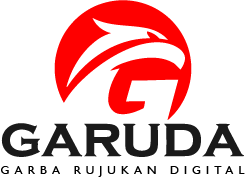CAMP TALK AND CITATIONALITY USED BY JACK MCFARLAND IN WILL & GRACE
Abstract
This research investigates the use of camp talk and citationality by Jack McFarland in the U.S sitcom Will and Grace. Using the first season’s transcript of the show and thoroughly watching the whole episodes, this study utilized a qualitative method to discover where he potentially employed camp talk and citationality in his utterance, and further categorized them based on the aspect of camp talk and citationality under the theory of Harvey (2002). The findings show 10 instances were identified, including three instances of citing cultural artefacts to foster a sense of shared culture with his interlocutors, three instances of citing the linguistic medium to challenge traditional gender norms, and four instances of citing femininity to use strategies of how women communicate. Thus, the results demonstrate the vital role that language and culture play in reinforcing his gay identity, as well as the ability of language to subvert accepted norms and influence his interpersonal relationships.References
Battles, K., & Hilton-Morrow, W. (2002). Gay characters in conventional spaces: Will and Grace and the situation comedy genre. Critical Studies in Media Communication, 19(1), 87–105. https://doi.org/10.1080/07393180216553
Bérubé, A. (1991). Coming Out under Fire: The History of Gay Men and Women in World War Two. New York: Free Press. 1990. Pp. xiii, 377. The University of North Carolina Press. https://doi.org/10.1086/ahr/96.3.845
Brockriede, W. (1974). Rhetorical criticism as argument. Quarterly Journal of Speech, 60, 165-174. https://doi.org/10.1080/00335637409383222.
Campbell, K. K. (1998). The Discursive Performance of Femininity: Hating Hillary. Rhetoric and Public Affairs, 1(1), 1–19. http://www.jstor.org/stable/41939428
Conway, R. J. (2006). A trip to the queer circus: Reimagined masculinities in Will & Grace. The New Queer Aesthetic on Television: Essays on Recent Programming, 75-84.
Cooper, E. (2003). Decoding Will and Grace: Mass Audience Reception of a Popular Network Situation Comedy. Sociological Perspectives, 46(4), 513–533. https://doi.org/10.1525/sop.2003.46.4.513
Eckert, P., & McConnell-Ginet, S. (2003) Language and Gender. Cambridge University Press, Cambridge.
https://doi.org/10.1017/CBO9780511791147
Eliason, M. J., & Schope, R. (2002). Shifting Sands or Solid Foundation? Lesbian, Gay, Bisexual, and Transgender Identity Formation. In The Health of Sexual Minorities (pp. 3–26). Springer US. https://doi.org/10.1007/978-0-387-31334-4_1
Gaudio, R. P. (1994). Sounding Gay: Pitch Properties in the Speech of Gay and Straight Men. American Speech, 69(1), 30–57. https://doi.org/10.2307/455948
Goodman, J., Tomlinson, M., & Richland, J. (2014). Citational Practices: Knowledge, Personhood, and Subjectivity. Annual Review of Anthropology, 43, 449-463. https://doi.org/10.1146/ANNUREV-ANTHRO-102313-025828.
Haas, A. (1979) Male and Female Spoken Language Differences: Stereotypes and Evidence. Psychological Bulletin, 86, 616-626.
https://doi.org/10.1037/0033-2909.86.3.616
Harvey, K. (1998). Translating Camp Talk. The Translator, 4(2), 295–320. https://doi.org/10.1080/13556509.1998.10799024
Harvey, K. (2002). Camp talk and citationality: a queer take on ‘authentic’ and ‘represented’ utterance. Journal of Pragmatics, 34(9), 1145–1165. https://doi.org/10.1016/S0378-2166(01)00058-3
Holmes, J. (1995). Women, Men and Politeness. Longman.
Holmes, J. (2013). An Introduction to Sociolinguistics (4th ed.). Routledge. https://doi.org/10.4324/9781315833057.
Lakoff, R. (1973). Language and Woman’s Place. Cambridge University Press.
Litosseliti, L. (2014). Gender and Language Theory and Practice. Routledge. https://doi.org/10.4324/9780203784792
Mann, S. L. (2011). Drag Queens’ Use of Language and the Performance of Blurred Gendered and Racial Identities. Journal of Homosexuality, 58(6–7), 793–811. https://doi.org/10.1080/00918369.2011.581923
Masia, V. (2017). A sociobiological account of indirect speech. Interaction Studies, 18, 142-160. https://doi.org/10.1075/IS.18.1.07MAS.
McConaghy, N., & Zamir, R. (1995). Sissiness, tomboyism, sex-role, sex identity and orientation. Australian and New Zealand Journal of Psychiatry, 29(2), 278–283. https://doi.org/10.3109/00048679509075921
Nakassis, C. V. (2013). Citation and Citationality. Signs and Society, 1(1), 51–77. https://doi.org/10.1086/670165
Newman, M. L., Groom, C. J., Handelman, L. D., & Pennebaker, J. W. (2008). Gender differences in language use: An analysis of 14,000 text samples. Discourse Processes, 45(3), 211–236. https://doi.org/10.1080/01638530802073712
Pinker, S., Nowak, M., & Lee, J. (2008). The logic of indirect speech. Proceedings of the National Academy of Sciences, 105, 833 - 838. https://doi.org/10.1073/pnas.0707192105.
Queen, R. M. (1998). ‘Stay queer!’‘Never fear!’: building queer social networks. World Englishes, 17(2), 203–214. https://doi.org/10.1111/1467- 971x.00094.
Ross, A. (1989). No respect: Intellectuals and popular culture. New York: Routledge.
Rudy, R., & Wardana, M. K. (2023). Popularizing the Gay Characters: A Study of American Gay-Themed TV Series in 2000s. Anaphora : Journal of Language, Literary, and Cultural Studies, 6(1), 37–48. https://doi.org/10.30996/anaphora.v6i1.8475
Sun, B., Mao, H., & Yin, C. (2020). Male and female users’ differences in online technology community based on text mining. Frontiers in Psychology, 11. https://doi.org/10.3389/fpsyg.2020.00806
Tannen, D. (1990). Gender differences in conversational coherence: Physical alignment and topical cohesion. In B. Dorval (Ed.), Conversational organization and its development (pp. 167–206). Ablex Publishing.
Thomson, K. (2021). An Analysis of LGBTQ+ Representation in Television and Film. Bridges: An Undergraduate Journal of Contemporary Connections, 5(1). https://scholars.wlu.ca/cgi/viewcontent.cgi?article=1053&context=bridges_contemporary_connections
Ulla, M. B., Macaraeg, J. M., & Ferrera, R. E. (2024). ‘What’s the word? That’s the word!’: linguistic features of Filipino queer language. Cogent Arts & Humanities, 11(1). https://doi.org/10.1080/23311983.2024.2322232.
Van Meer, M. M., & Pollmann, M. M. H. (2022). Media Representations of Lesbians, Gay Men, and Bisexuals on Dutch Television and People’s Stereotypes and Attitudes About LGBs. Sexuality & Culture, 26(2), 640–664. https://doi.org/10.1007/s12119-021-09913-x
Vatjinda, S. (2021). A study of translation strategies used in the diary of Tootsie’s lgbtq slang. Strength for Today and Bright Hope for Tomorrow, 22(1), 115. https://repository.au.edu/server/api/core/bitstreams/9f1b2092-0bf1-45b6-aafc-d593b5d22cf7/content.
Weststrate, N. M., & McLean, K. C. (2010). The rise and fall of gay: A cultural-historical approach to gay identity development. Memory, 18(2), 225–240. https://doi.org/10.1080/09658210903153923
Downloads
Published
Issue
Section
License

This work is licensed under a Creative Commons Attribution-ShareAlike 4.0 International License.
The author is responsible for acquiring the permission(s) to reproduce any copyrighted figures, tables, data, or text that are being used in the submitted paper. Authors should note that text quotations of more than 250 words from a published or copyrighted work will require grant of permission from the original publisher to reprint. The written permission letter(s) must be submitted together with the manuscript.








